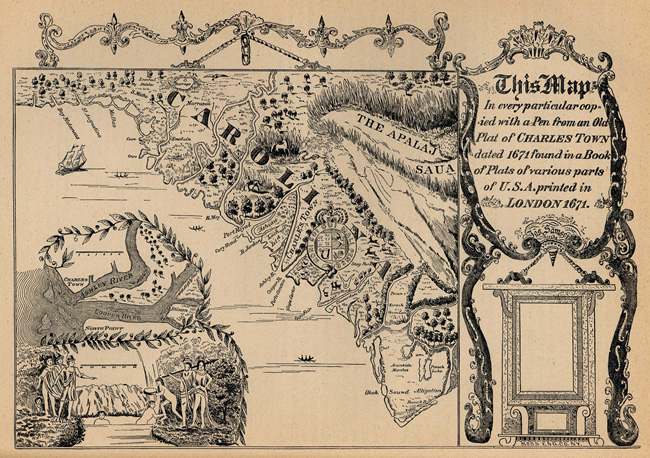Story by planitcharleston.com / July 4, 2017

In 1663, the newly restored-to-the-throne King Charles II granted the Carolina territory to eight of his loyal friends, known as the Lords Proprietors. After seven years of planning, the Lords were finally able to arrange for settlement of the territory. They began with the intended capital of the Carolinas, with what we know today as Charleston.
The Lords Proprietors named the community Charles Towne, after the King Charles, and chose a place on the West bank of the Ashley River for the settlement. Anthony Ashley-Cooper, one of the Lords Proprietors, expected Charles Towne to grow into a “great port towne”. By 1680 the settlement had grown so much that the city was forced to move to its current location on the peninsula. New residents arrived regularly from as near as Virginia and as far away as England and Barbados.
The 1680 move to Charleston’s current peninsular location proved to be an opportunity to organize for a future of growth. The Grand Modell laid out the “model of an exact regular town”. This model planned for the growth of Charles Towne and provided space for a town center at the intersection of Broad and Meeting Streets.
In 1752 St. Michael’s Episcopal Church, Charleston’s oldest and one of its most famous churches, was built on the southeast corner. A year later, the city hall was built across the street. Provincial Court, the Commons House of Assembly, and the Royal Governor’s Council Chamber met in this elegant building. Because of the various religious and governmental offices overlooking it, the intersection at Broad and Meeting Streets came to be known as the Four Corners of the Law. Both St. Michael’s and City Hall are still standing today along with the Charleston County Courthouse and the U.S. Post Office Building.
Charles Towne was the Southernmost British settlement during the 1600s and quickly became the thriving capital of the Carolinas. However, the city was subject to frequent attacks from both land and water. Spain and France both disputed the British claim on the land. Resistance from Native Americans and pirates posed another challenge. In order to better defend their settlement, the colonists constructed a fortification wall around the settlement. Only two buildings remain from the original wall structure; the Pink House was a community tavern and the Powder Magazine was a storage facility for gunpowder.
By the 1750s, Charles Towne had fulfilled Anthony Ashley-Coopers expectations and was a vibrant and still-growing port town. The economy was booming, supporting agricultural cultivation of indigo and rice, a lucrative shipping industry. Charles Towne was the hub of Atlantic trade in the South. By the time the American Revolution was brewing, Charles Towne was the fourth largest port in the American colonies behind Boston, New York, and Philadelphia, and was the largest and wealthiest city south of Philadelphia. Charles Town had become the economic and cultural center of the South.